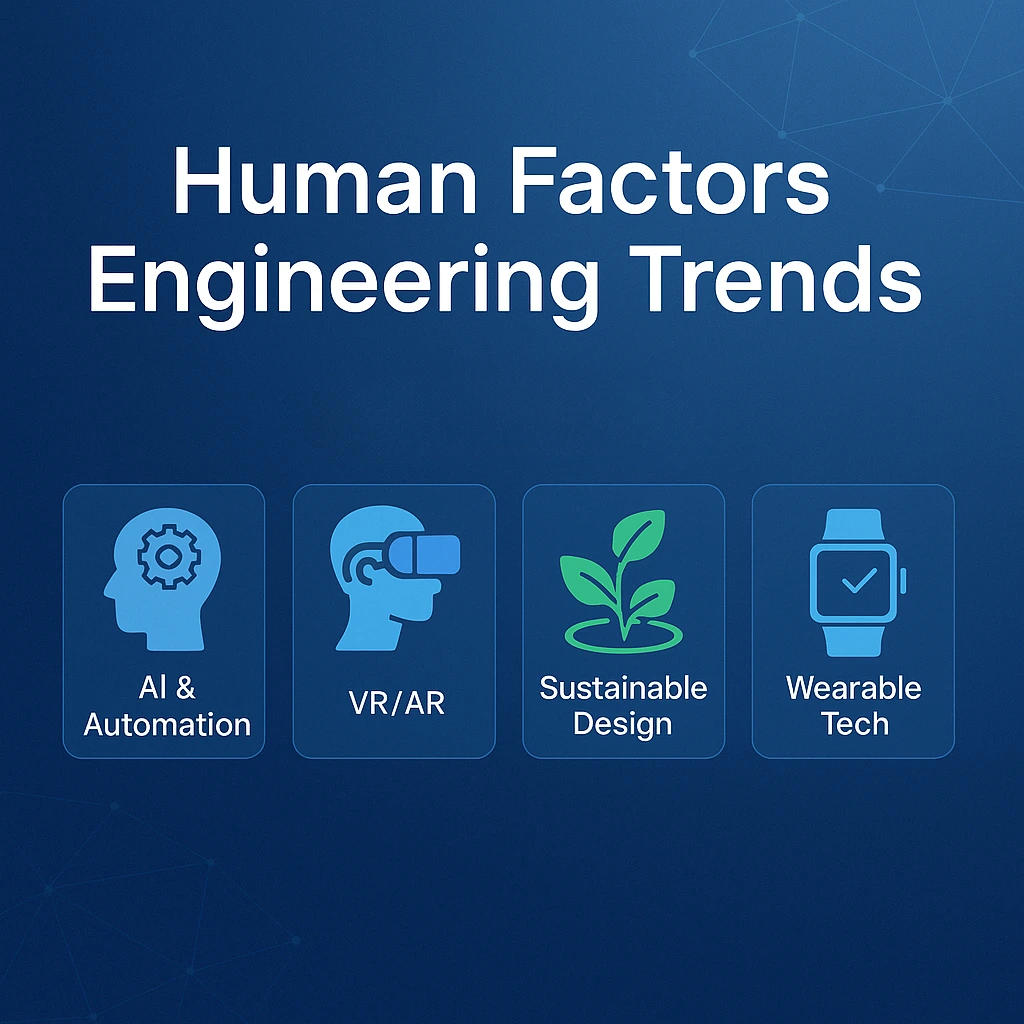Human Factors Engineering (HFE) is the science of understanding human capabilities and limitations to optimize the interaction between people and systems. As technology rapidly evolves, so too do the complexities of human-technology interfaces. Staying abreast of the latest Human Factors Engineering Trends is crucial for professionals aiming to create safer, more efficient, and user-friendly products and environments. These emerging trends are not just theoretical concepts; they are actively shaping industries from healthcare and aviation to consumer electronics and automotive design.
Table of Contents
- The Rise of AI and Automation in HFE
- Immersive Technologies: VR/AR in Training and Design
- Sustainable and Inclusive Design Practices
- Data-Driven Insights and Wearable Tech
- The Future of Human Factors Engineering Trends
The Rise of AI and Automation in HFE
Artificial intelligence (AI) and automation are perhaps the most transformative forces influencing Human Factors Engineering Trends. The integration of AI into complex systems introduces new challenges and opportunities for human-machine teaming. HFE professionals are now focused on designing intuitive AI interfaces, managing automation trust, and ensuring human oversight in autonomous operations. This involves understanding cognitive load, decision-making biases, and effective communication between humans and AI.
Designing for AI-Human Collaboration
As AI systems become more sophisticated, the emphasis shifts from human control to human-AI collaboration. HFE ensures that AI assistance is genuinely helpful, transparent, and adaptable to user needs. This means designing AI systems that can explain their decisions, learn from human input, and gracefully handle errors, all while maintaining user confidence and reducing potential fatigue or complacency.
Ethical Considerations in AI Systems
A critical aspect of HFE in the AI era involves addressing ethical implications. Ensuring fairness, accountability, and transparency in AI algorithms is paramount. Human Factors engineers play a vital role in identifying and mitigating biases, protecting user privacy, and designing systems that align with human values and societal norms. This often involves user research to uncover potential ethical pitfalls before deployment.
Immersive Technologies: VR/AR in Training and Design
Virtual Reality (VR) and Augmented Reality (AR) are no longer just for gaming; they are powerful tools revolutionizing HFE. These immersive technologies offer unprecedented opportunities for realistic training simulations, rapid prototyping, and collaborative design reviews. They allow engineers to test designs in virtual environments before physical production, saving time and resources.
Enhancing Prototyping and Simulation
VR and AR enable HFE professionals to create highly accurate digital mock-ups and simulations. Users can virtually interact with products or environments, providing invaluable feedback on usability, accessibility, and potential hazards. This significantly shortens design cycles and leads to more human-centered outcomes by allowing early identification and correction of design flaws.
Sustainable and Inclusive Design Practices
The growing global awareness of environmental impact and social equity is pushing HFE towards more sustainable and inclusive design. This means considering the entire lifecycle of a product, from material sourcing and manufacturing to user interaction and end-of-life disposal. Furthermore, designing for diverse user populations is becoming a fundamental requirement, moving beyond average users to accommodate a wide spectrum of abilities, ages, and backgrounds.
Eco-Conscious Product Development
HFE contributes to sustainability by designing products that minimize resource consumption, reduce waste, and encourage responsible user behavior. This includes optimizing energy efficiency, designing for durability and reparability, and promoting user awareness of environmental impact. For more information on sustainable design principles, you can refer to Wikipedia’s article on Sustainable Design.
Universal Design Principles
Inclusive design, or universal design, ensures that products and environments are usable by the widest possible range of people without the need for adaptation or specialized design. HFE is at the forefront of this movement, conducting research into varied user needs and developing guidelines that promote accessibility and usability for everyone, including those with disabilities.
Data-Driven Insights and Wearable Tech
The proliferation of sensors and wearable technology provides an unprecedented amount of real-time data on human performance, physiological states, and environmental interactions. This data is invaluable for HFE, allowing for more precise analysis of user behavior, identification of fatigue, stress, or discomfort, and optimization of system design based on empirical evidence.
Real-time Performance Monitoring
Wearables can track metrics like heart rate, movement, cognitive load, and eye-gaze, offering insights into how users interact with systems in real-world conditions. This data informs design improvements that enhance safety, efficiency, and comfort, particularly in high-stakes environments like industrial operations or medical procedures.
Predictive Analytics for Ergonomics
By applying machine learning to large datasets from wearables and sensors, HFE can develop predictive models. These models can anticipate potential ergonomic issues, predict fatigue levels, or identify early warning signs of stress, allowing for proactive interventions and personalized adjustments to workstations or workflows. This represents a significant leap forward in preventative HFE.
Here’s a quick overview of how these trends impact key HFE domains:
| HFE Domain | Emerging Trend | Impact/Benefit |
|---|---|---|
| User Experience | AI & Immersive Tech | More intuitive interfaces, realistic prototyping, personalized interactions |
| Safety & Reliability | Data-Driven & AI | Predictive risk assessment, enhanced human-machine teaming, error reduction |
| Training & Development | Immersive Tech | Highly realistic simulations, cost-effective training, skill transfer |
| Accessibility | Inclusive Design | Products usable by diverse populations, reduced barriers for people with disabilities |
| Sustainability | Eco-Conscious Design | Reduced environmental footprint, resource efficiency, responsible consumption |
The Future of Human Factors Engineering Trends
The future of Human Factors Engineering is dynamic and increasingly integrated with advanced technologies. These Human Factors Engineering Trends will continue to push the boundaries of how we design for human capabilities, ensuring that technological progress genuinely serves human well-being and productivity. The ongoing challenge will be to balance technological innovation with ethical considerations and a deep understanding of human needs. Professionals who embrace these trends will be at the forefront of shaping the human experience in an increasingly complex world. Keep exploring our HFE Best Practices for more insights.


